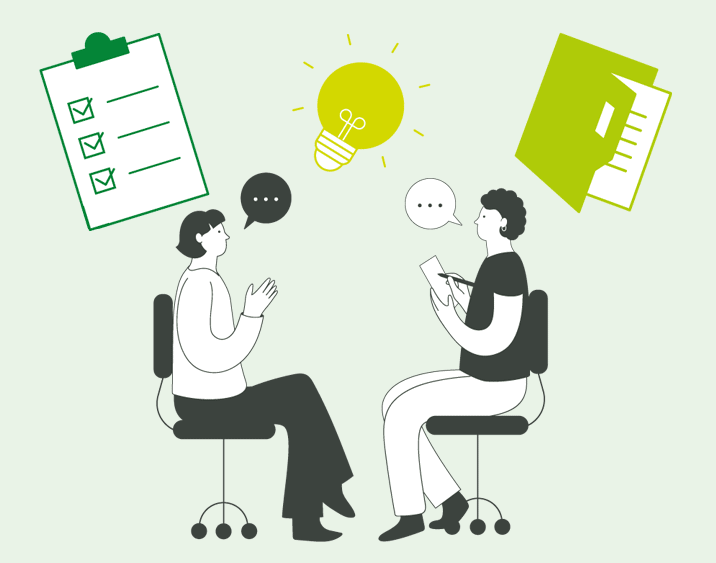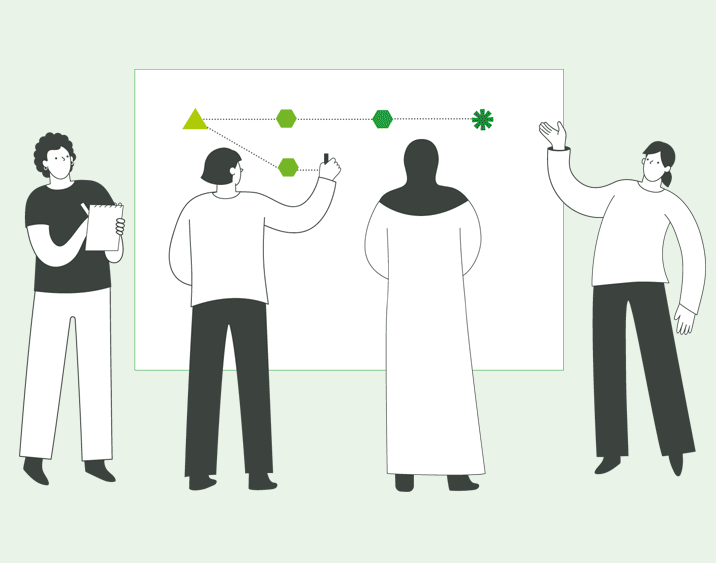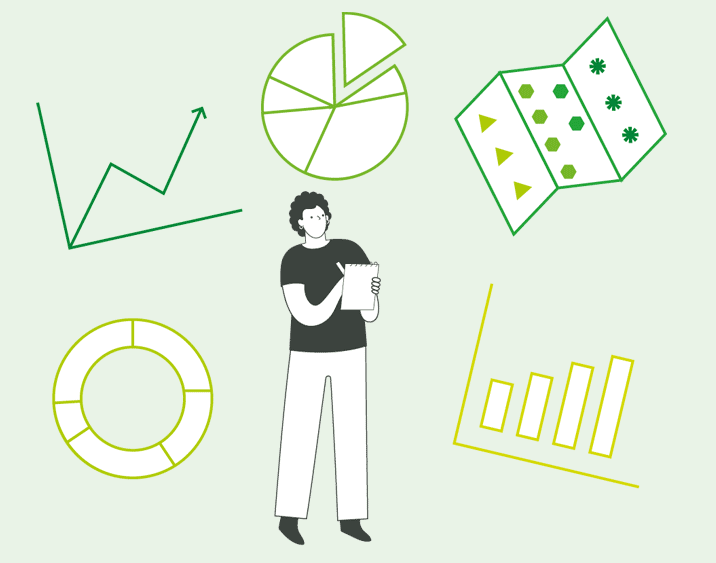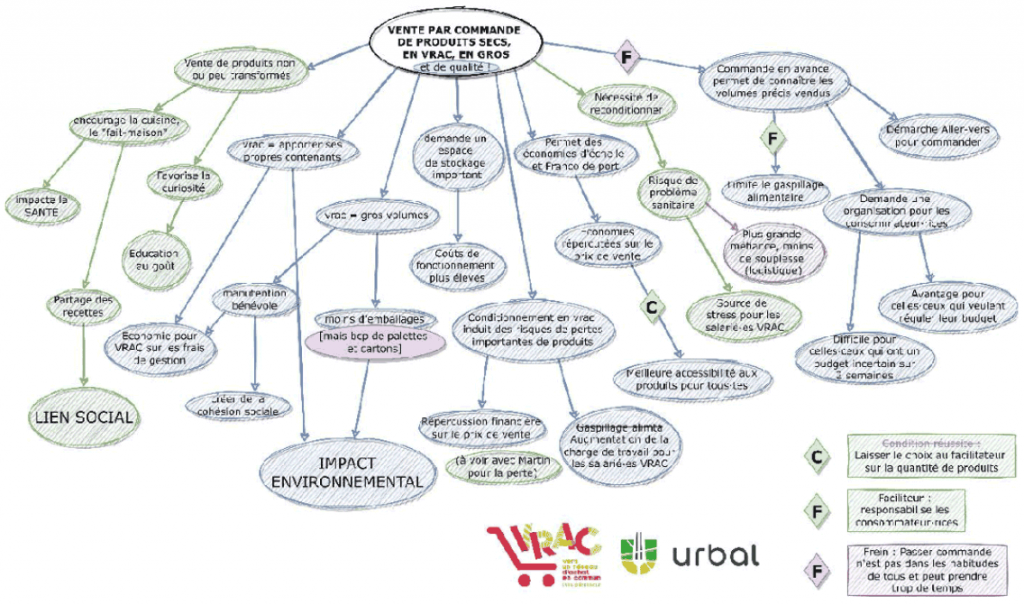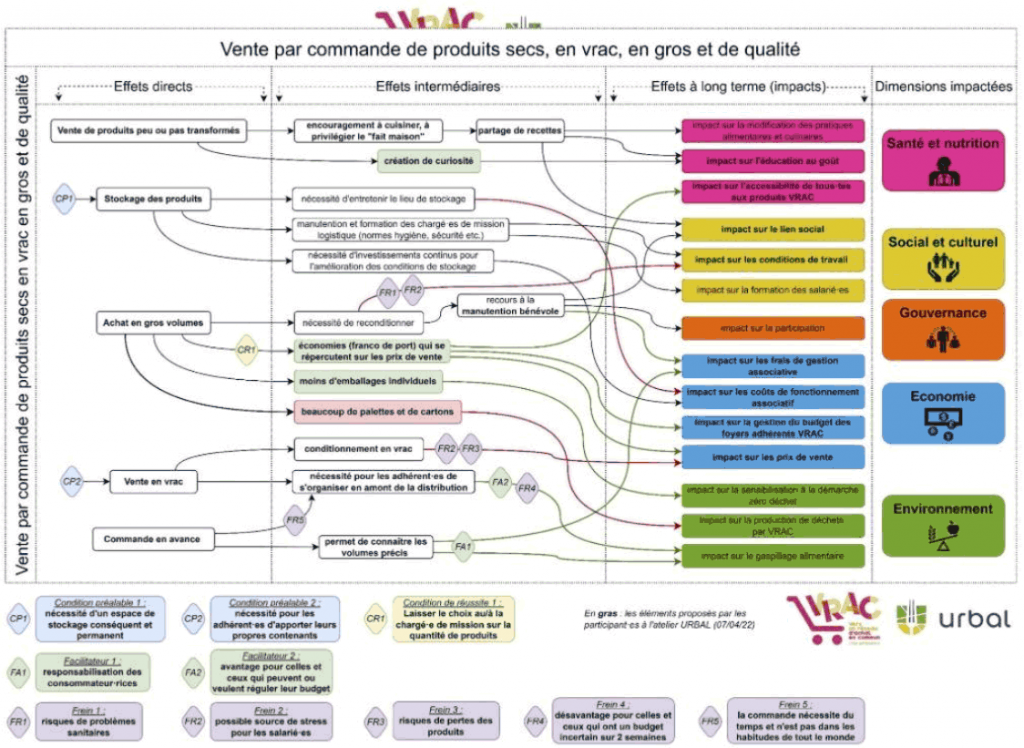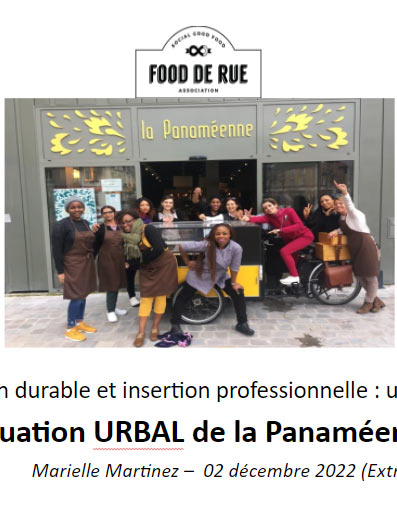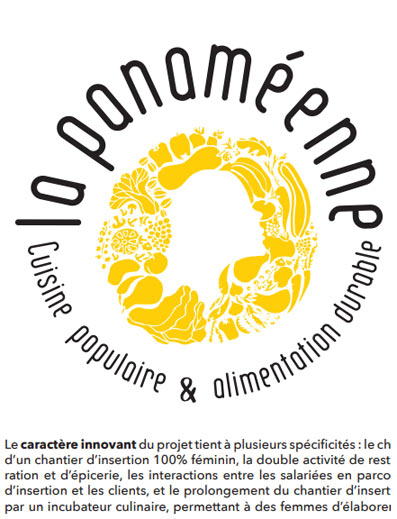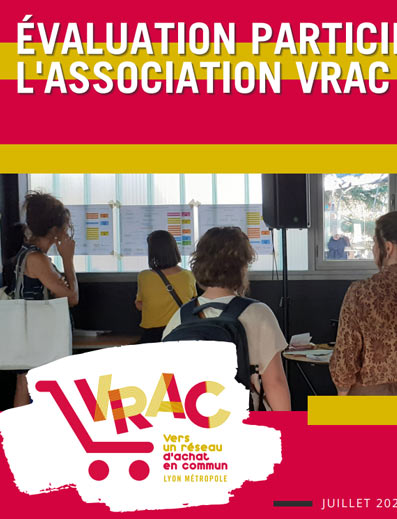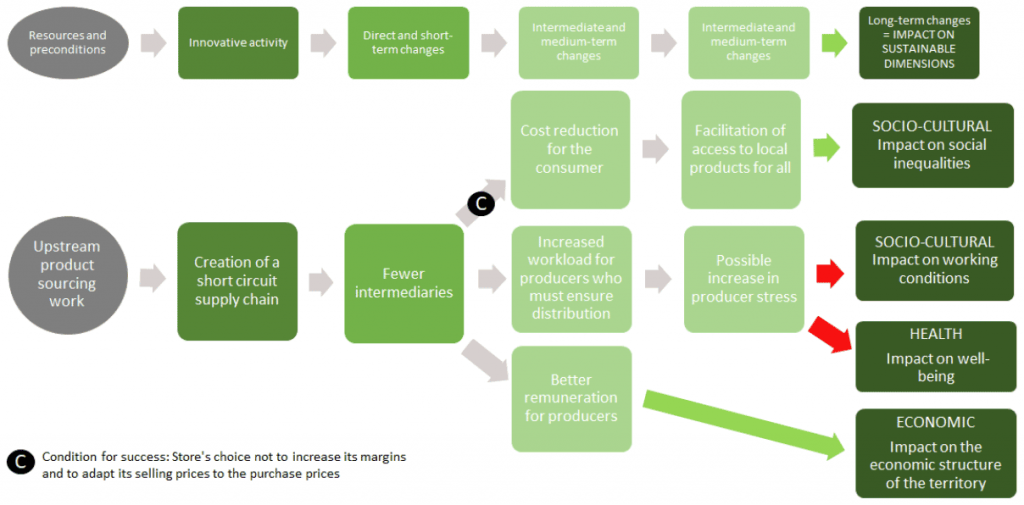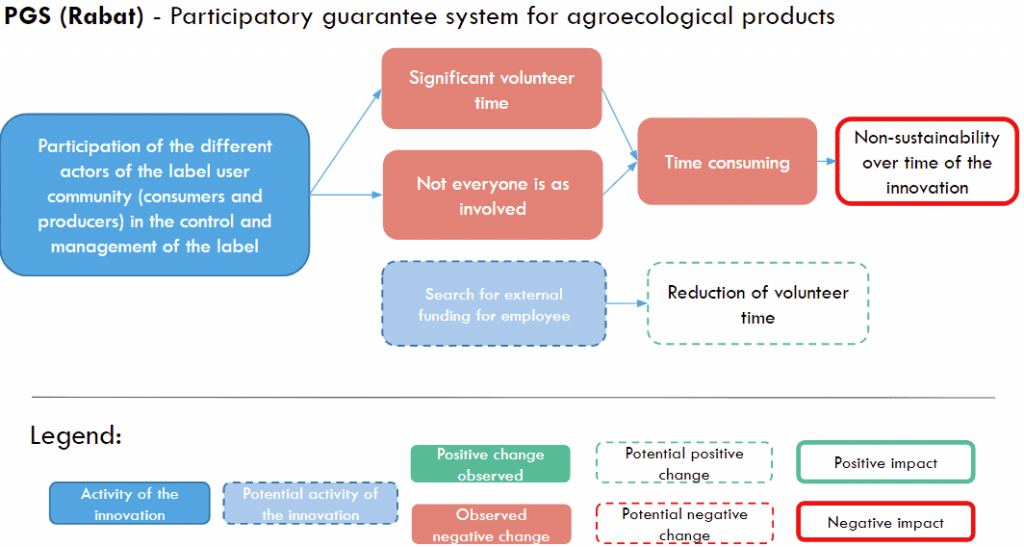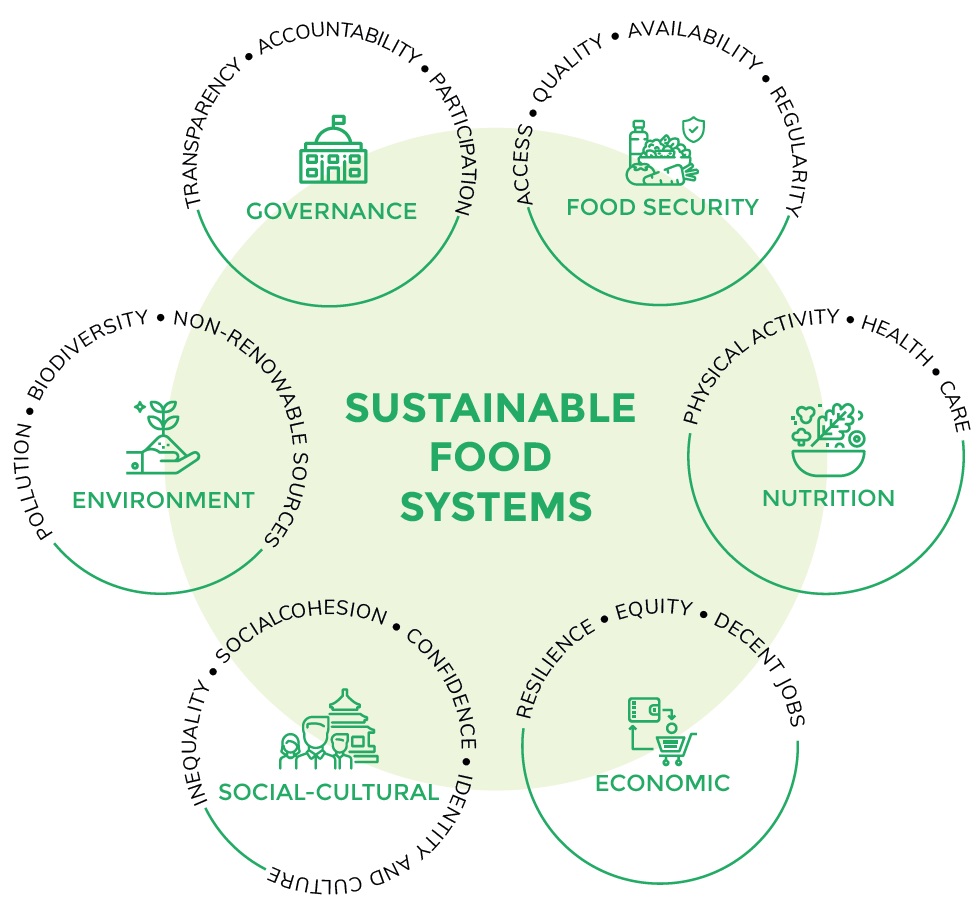Il existe de nombreuses façons d’organiser les cartes de chemin d’impact, mais toutes les cartes passent par plusieurs étapes de développement. Les pages suivantes présentent des exemples des trois étapes de l’analyse des données, lors d’un atelier organisé à Lyon avec VRAC, une association qui organise dans les quartiers à faibles revenus des groupes d’achat en vrac de produits de l’agriculture biologique/agricole/équitable, vendus à prix coûtant.
Exemple de trois étapes de traitement des données
Étape 1 :
Carte de chemin d’impact à la fin d’un atelier, commençant par une activité à gauche, et allant jusqu’aux changements et aux impacts à droite, avec facilitateurs et obstacles identifiés en cours de route. Il s’agit d’une seule des neuf cartes conçues au cours de l’atelier, chacune d’entre elles représentant une activité différente. Chacun des trois groupes de travail a travaillé successivement sur la même carte, en utilisant une couleur différente. Aucune attention particulière n’a été portée à la distinction entre les impacts sur les différentes dimensions de la durabilité (pas de drapeaux de couleur).
Étape 2 :
Numérisation de la carte avec ajout des conditions, des freins et des leviers de changement (sur la base des discussions en ateliers et des entretiens de l’étape 1). La numérisation de la carte permet d’en avoir une vision plus claire et l’objectif est de créer une vue d’ensemble des chemins d’impact identifiés dans les groupes de discussion. (source : Castellano, Rigaud & Valette, 2022)
Étape 3 :
Réorganisation de la carte qui inclut (1) des éléments complémentaires issus des entretiens de l’étape 1 (en gras) ;
(2) le positionnement de chaque élément pour relier l’identification et le nom de l’impact sur chaque dimension de la durabilité ; (3) la réflexion sur les chemins ; et (4) les conditions de réussite, les leviers et les obstacles au changement, avec des couleurs différentes pour signifier les impacts négatifs ou positifs.
Il existe d’autres options pour présenter les résultats de l’atelier. Par exemple, vos résultats peuvent être organisés de manière à présenter les principaux impacts pour chaque dimension de la durabilité. Vous pouvez également résumer les principales conclusions de la carte dans un court texte qui complète la carte (voir le livret UFIL Lyon).
Les cartes obtenues au cours de l’atelier peuvent également être réorganisées en fonction de divers besoins. Par exemple, il peut être utile de sélectionner les résultats que vous partagez en fonction des intérêts de différents publics. Dans le cas de La Panaméenne, un restaurant et une épicerie parisiens qui se concentrent sur le développement des compétences et l’emploi des femmes immigrées vivant dans des conditions précaires, les résultats ont été réorganisés pour présenter les impacts sur trois publics clés : les femmes travaillant dans l’organisation, les clientes elles-mêmes et le quartier environnant. Le fait d’organiser ainsi les cartes de chemin d’impact a permis de démontrer clairement comment ces groupes clés sont affectés par l’innovation.




